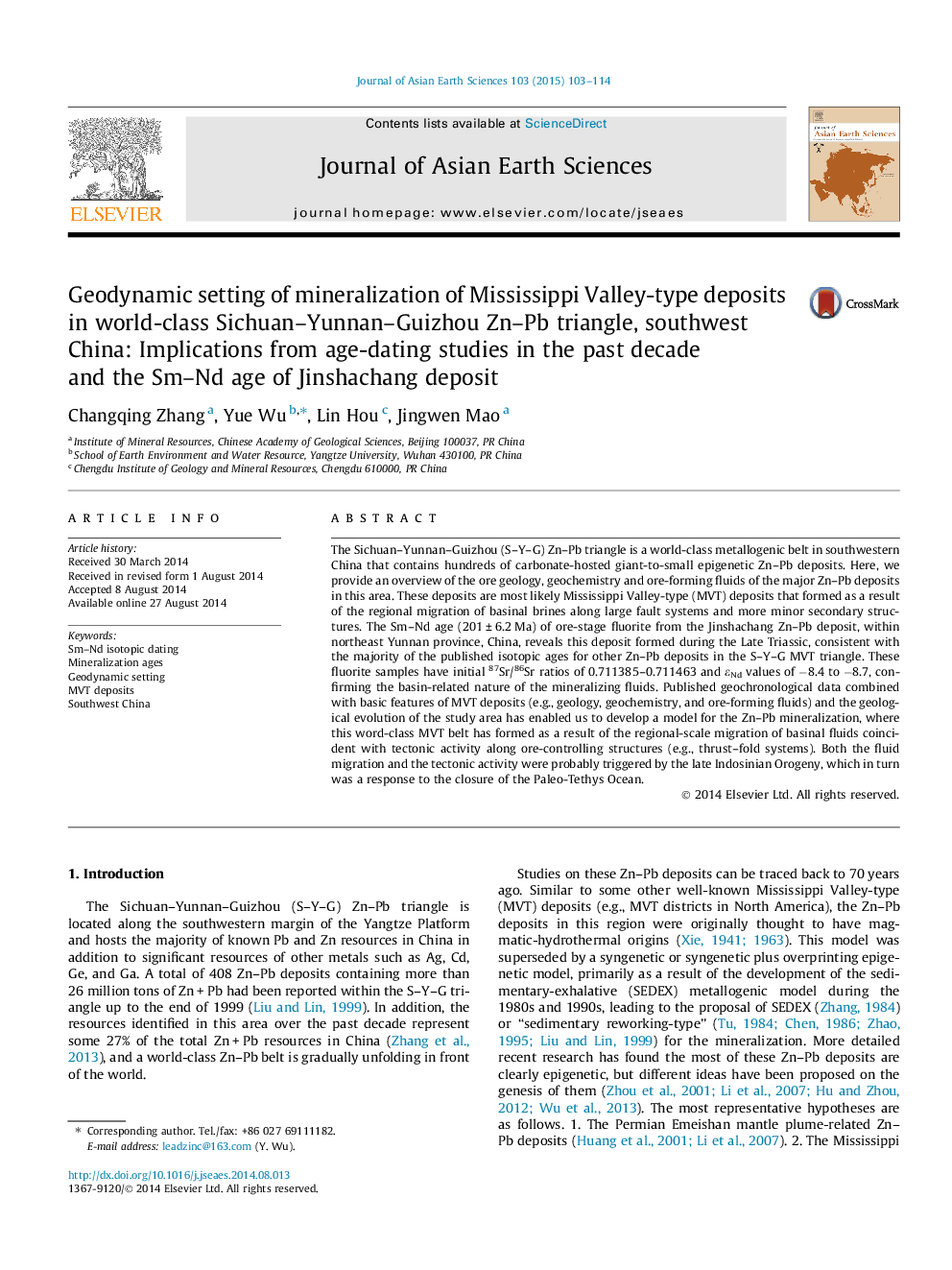| کد مقاله | کد نشریه | سال انتشار | مقاله انگلیسی | نسخه تمام متن |
|---|---|---|---|---|
| 4730352 | 1640366 | 2015 | 12 صفحه PDF | دانلود رایگان |

• The Zn–Pb deposits in S–Y–G Zn–Pb triangle could be classified as MVT deposits.
• A new Sm–Nd age (201 ± 6.2 Ma) is obtained from the Jinshachang MVT deposit.
• The ore-forming fluids could be originated from the basinal brines.
• MVT deposits in S–Y–G triangle were most likely formed during Late Triassic.
• Late Indosinian orogeny-related model is proposed for these MVT deposits.
The Sichuan–Yunnan–Guizhou (S–Y–G) Zn–Pb triangle is a world-class metallogenic belt in southwestern China that contains hundreds of carbonate-hosted giant-to-small epigenetic Zn–Pb deposits. Here, we provide an overview of the ore geology, geochemistry and ore-forming fluids of the major Zn–Pb deposits in this area. These deposits are most likely Mississippi Valley-type (MVT) deposits that formed as a result of the regional migration of basinal brines along large fault systems and more minor secondary structures. The Sm–Nd age (201 ± 6.2 Ma) of ore-stage fluorite from the Jinshachang Zn–Pb deposit, within northeast Yunnan province, China, reveals this deposit formed during the Late Triassic, consistent with the majority of the published isotopic ages for other Zn–Pb deposits in the S–Y–G MVT triangle. These fluorite samples have initial 87Sr/86Sr ratios of 0.711385–0.711463 and εNd values of −8.4 to −8.7, confirming the basin-related nature of the mineralizing fluids. Published geochronological data combined with basic features of MVT deposits (e.g., geology, geochemistry, and ore-forming fluids) and the geological evolution of the study area has enabled us to develop a model for the Zn–Pb mineralization, where this word-class MVT belt has formed as a result of the regional-scale migration of basinal fluids coincident with tectonic activity along ore-controlling structures (e.g., thrust–fold systems). Both the fluid migration and the tectonic activity were probably triggered by the late Indosinian Orogeny, which in turn was a response to the closure of the Paleo-Tethys Ocean.
Journal: Journal of Asian Earth Sciences - Volume 103, 1 May 2015, Pages 103–114